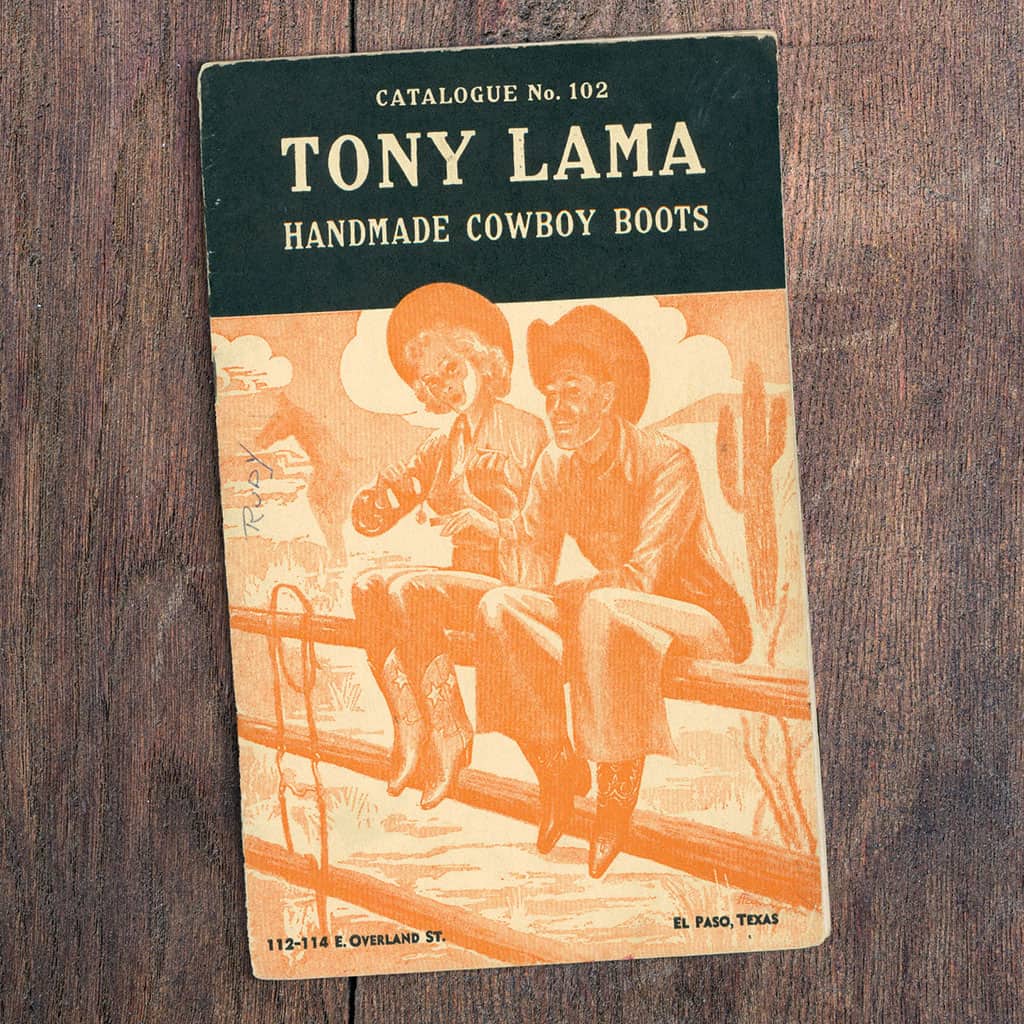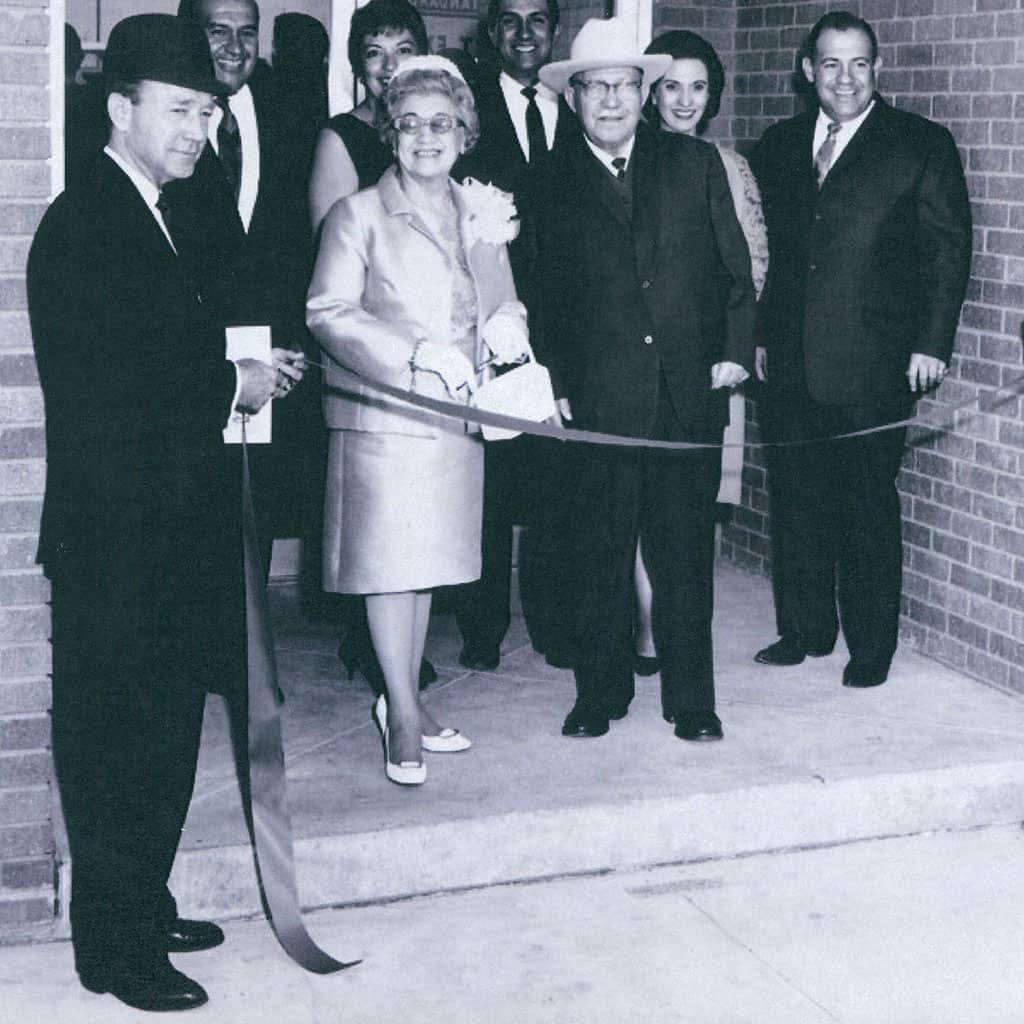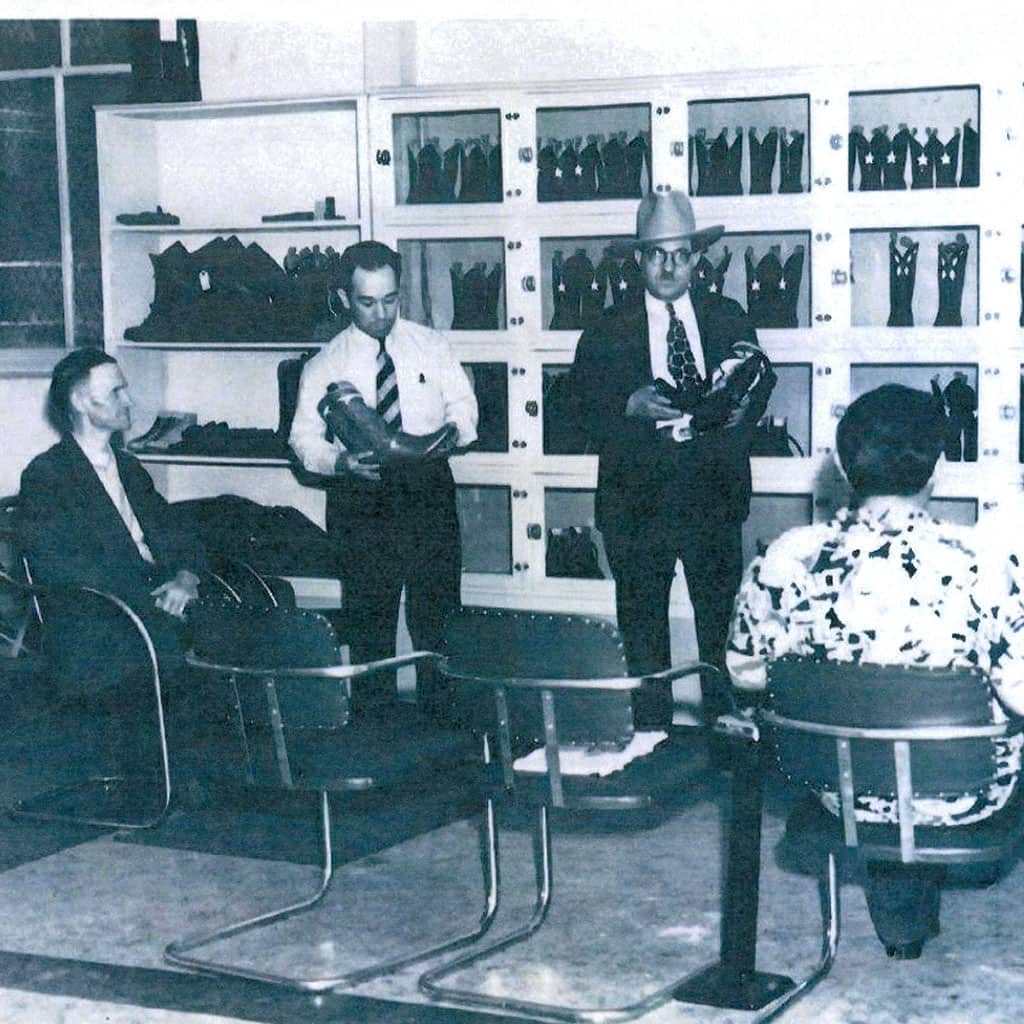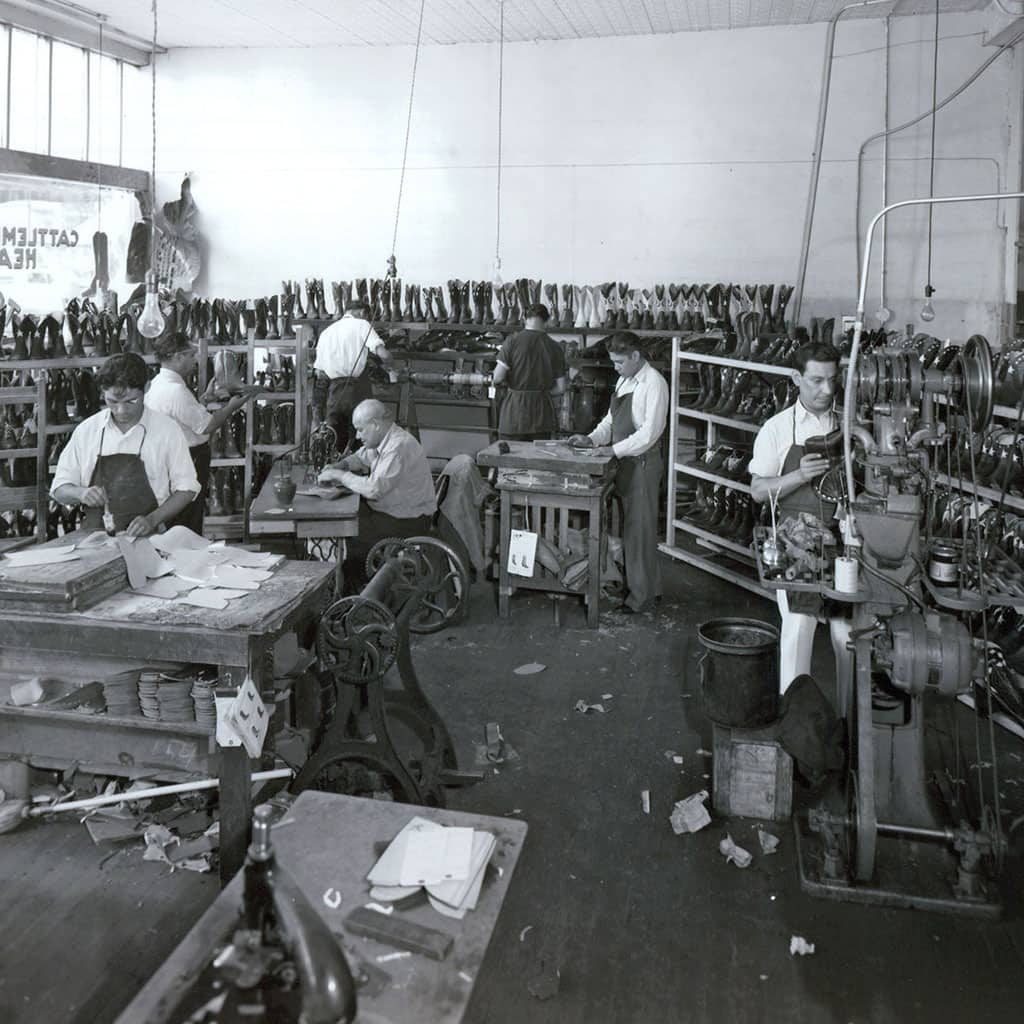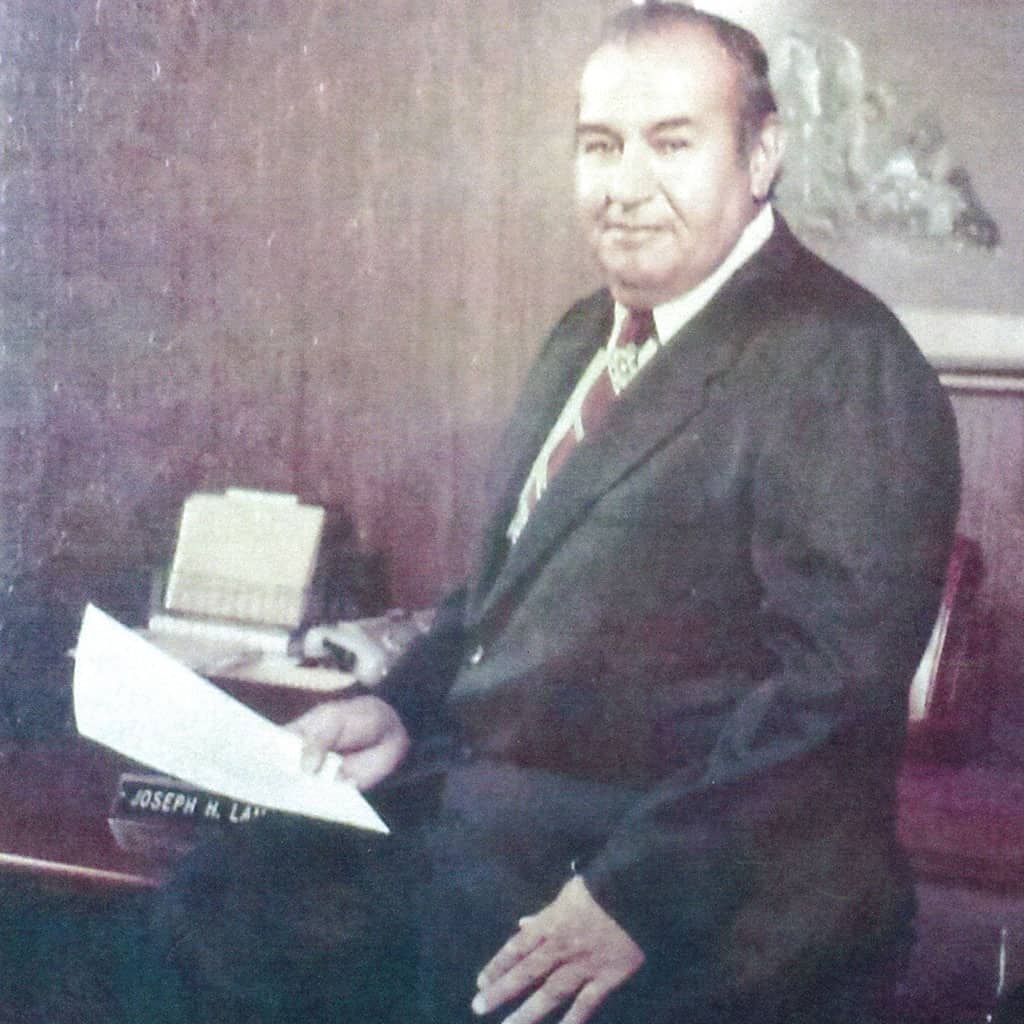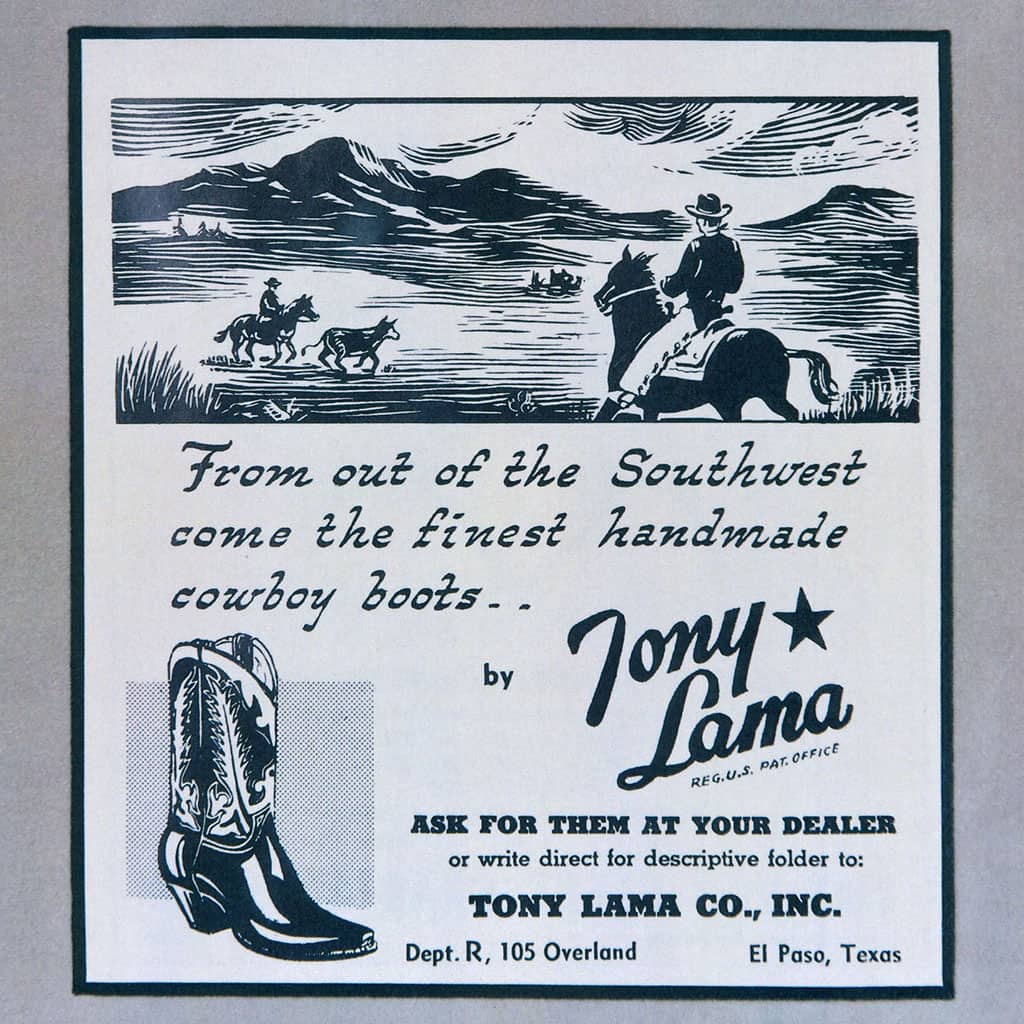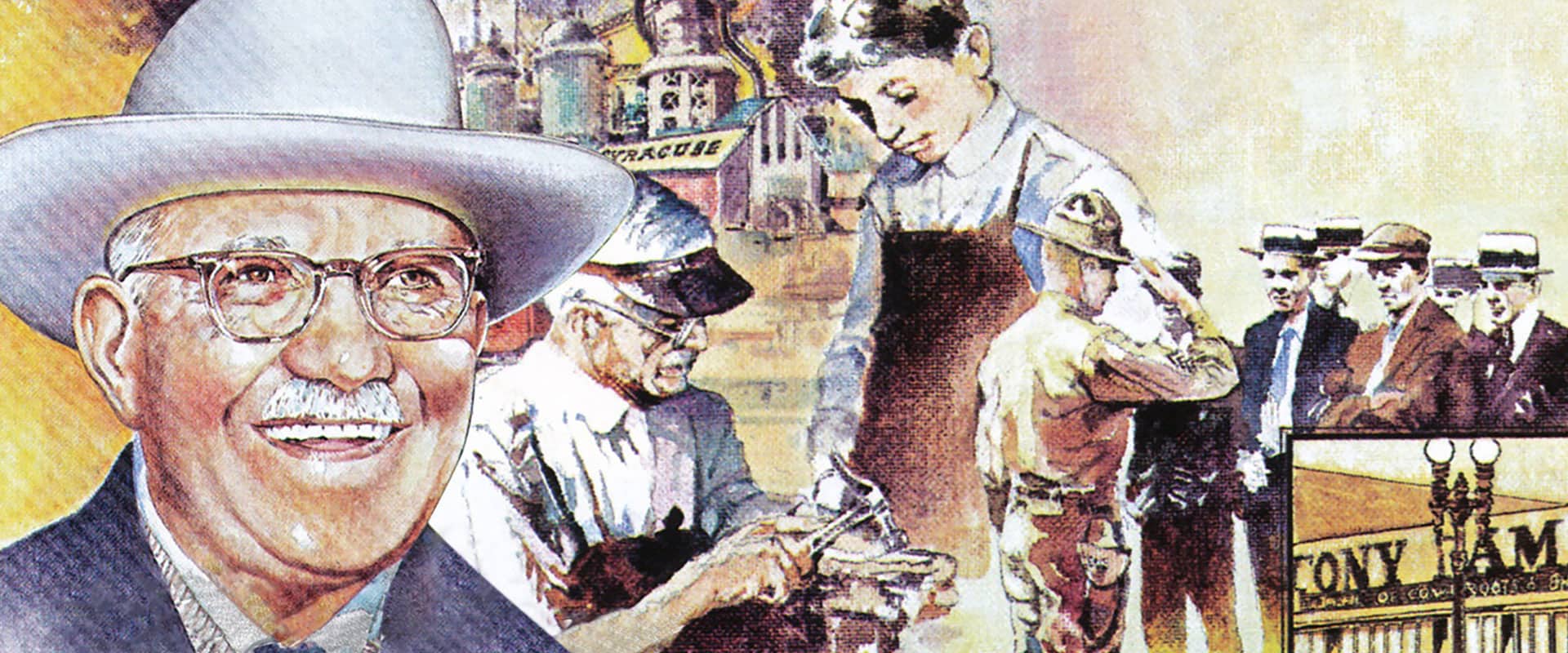
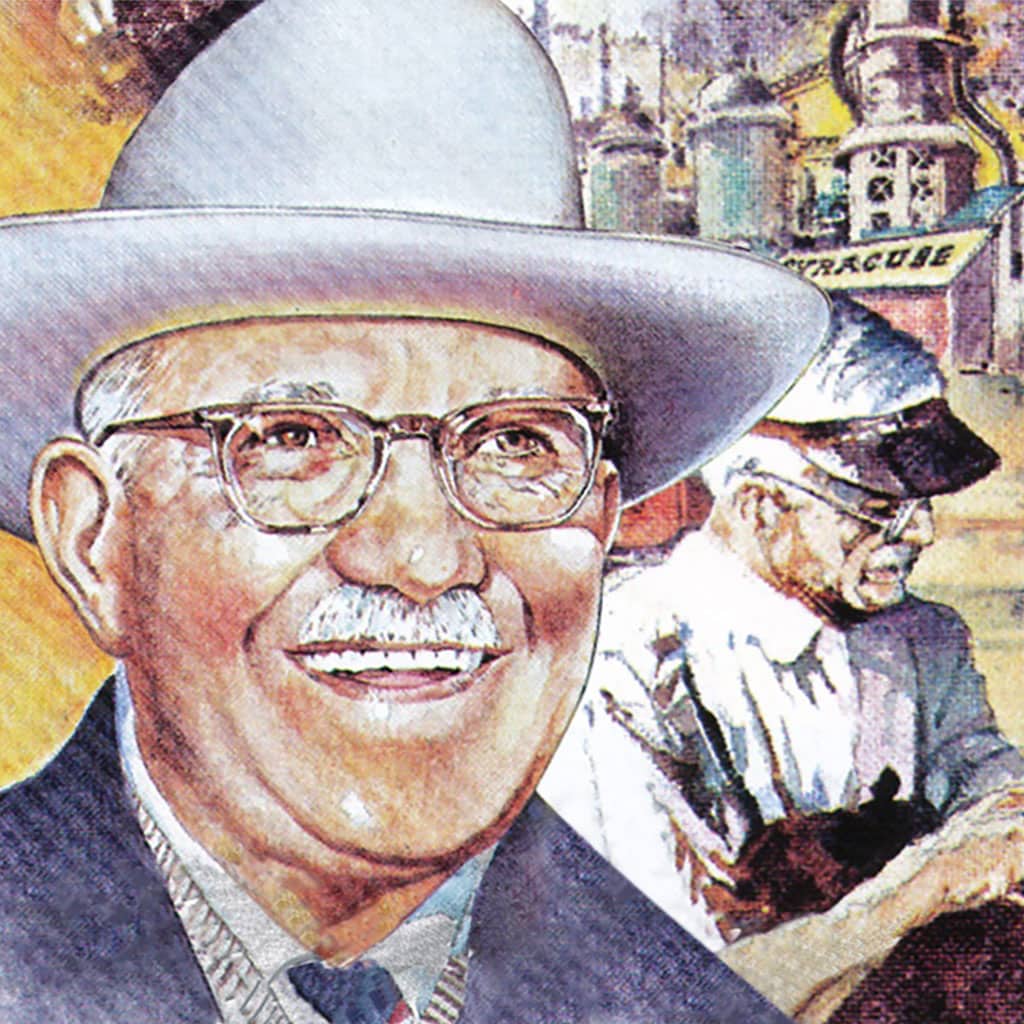
The Story of Tony Lama
The World’s Most Recognized Western Boot Brand Since 1911
Throughout history, Tony Lama has repeatedly proven to be the world’s most recognized western boot brand. Each pair of prized Tony Lama boots is a true work of art, meticulously built by hand, crafted of the finest leathers, always inspiring, always recognizable.
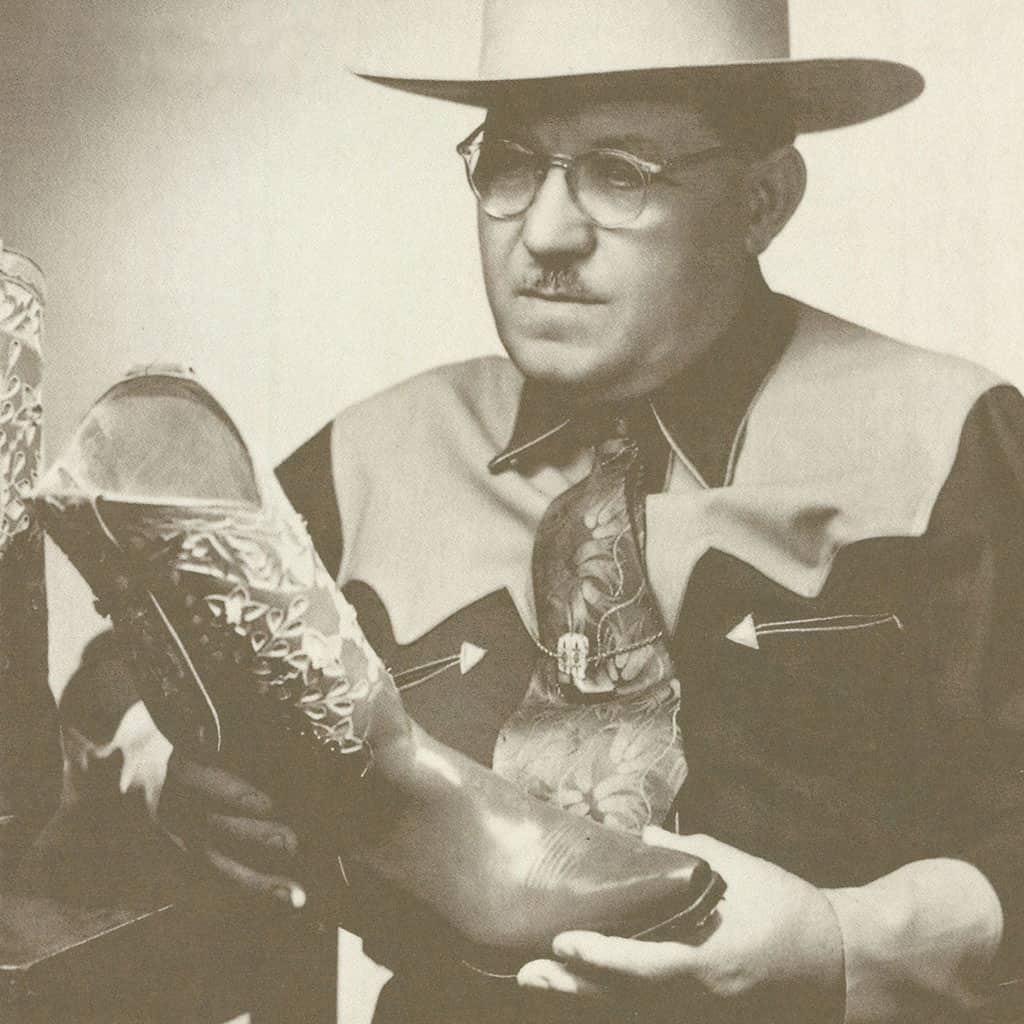
The Legendary Anthony "Tony" Lama.
1887
An Early Beginning
Legendary Anthony "Tony" Lama was born in the year 1887, six months after his parents left Italy and landed in the USA. Several years later, Tony was orphaned at age 11 after the unfortunate passing of his parents. Following the tragedy, Tony Lama’s uncle took him to a shoemaker in Syracuse, New York where he became an apprentice and quickly learned the ways of boot making and the leather trade industry.
When Tony Lama was 16 years old, he lied about his age in order to join the US Cavalry stationed in Fort Bliss, Texas as a cobbler handcrafting boots for the soldiers. It wasn’t long before Tony’s reputation of crafting custom boots spread across the southwest, attracting cowboys and ranchers from around the area.
1911
The Start of a Company
After completing his duty with the Cavalry, Tony Lama settled down in the Mexican border town of El Paso, Texas, which was heavily saturated with men pursuing the western style boot. With such a high demand for Tony Lama’s expertise, he formally decided to set up his own company in 1911 on East Overland Street in El Paso. His company began as a small shoe repair shop, repairing boots for the soldiers at Fort Bliss. However, due to his reputation preceding his skill, he transformed the shop into a boot factory in order to fulfill the hundreds of requests for custom boots.
1917
Family & Business
In 1917, Tony Lama married Esther Hernandez, a pianist and music teacher. The married couple had six children (three sons and three daughters), and taught each of them how to master the skill and art of boot making. As the children grew up, they continued to learn the many ways of the industry and eventually all became active participants in the company.
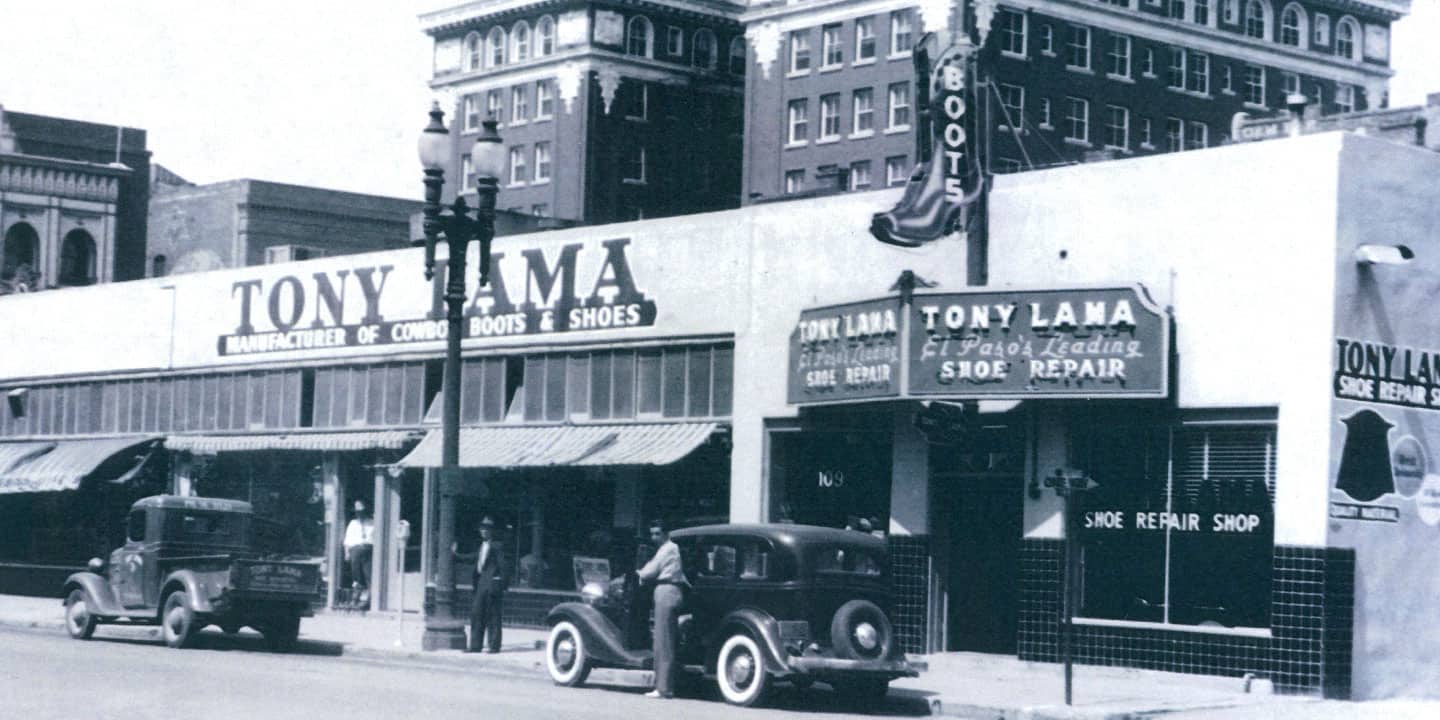
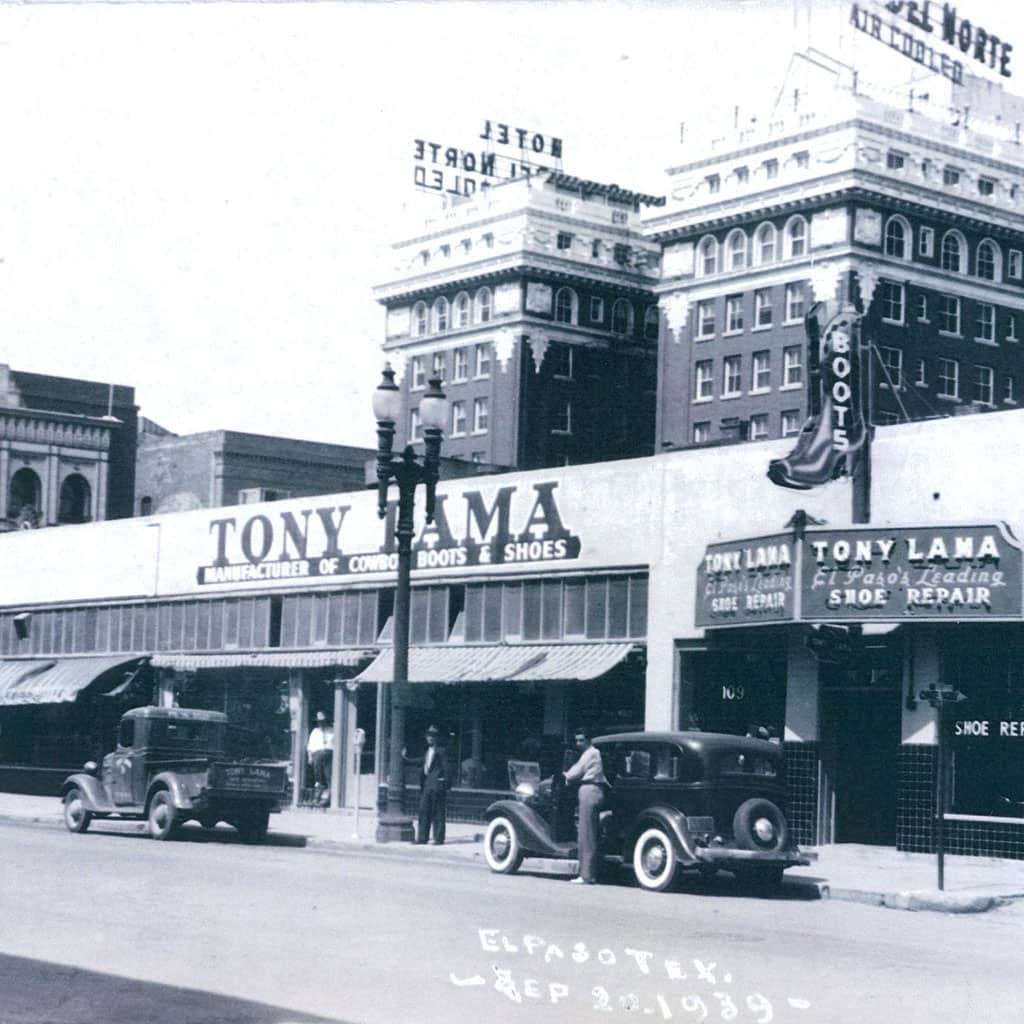
The original Tony Lama store front and factory.
1933 - 1945
Pre-War Prosperity and the Impact of World War II
By 1933, business was booming for the Lama family and the factory was producing nearly 40 pairs of boots per day. Unfortunately, the economic impact of World War II caused business to slow down due to the scarcity of leather supply, but shortly after the war, business returned better than ever before.
1946
The Family Business Flourishes
In the year 1946, Tony Lama made an official decision to turn the family business into a corporation. Custom boot making continued to be a large part of the family’s heritage and in 1948, Joseph "Bert" Lama, the oldest of the three sons, had the honor of presenting President Harry S. Truman with a pair of kangaroo skin boots.
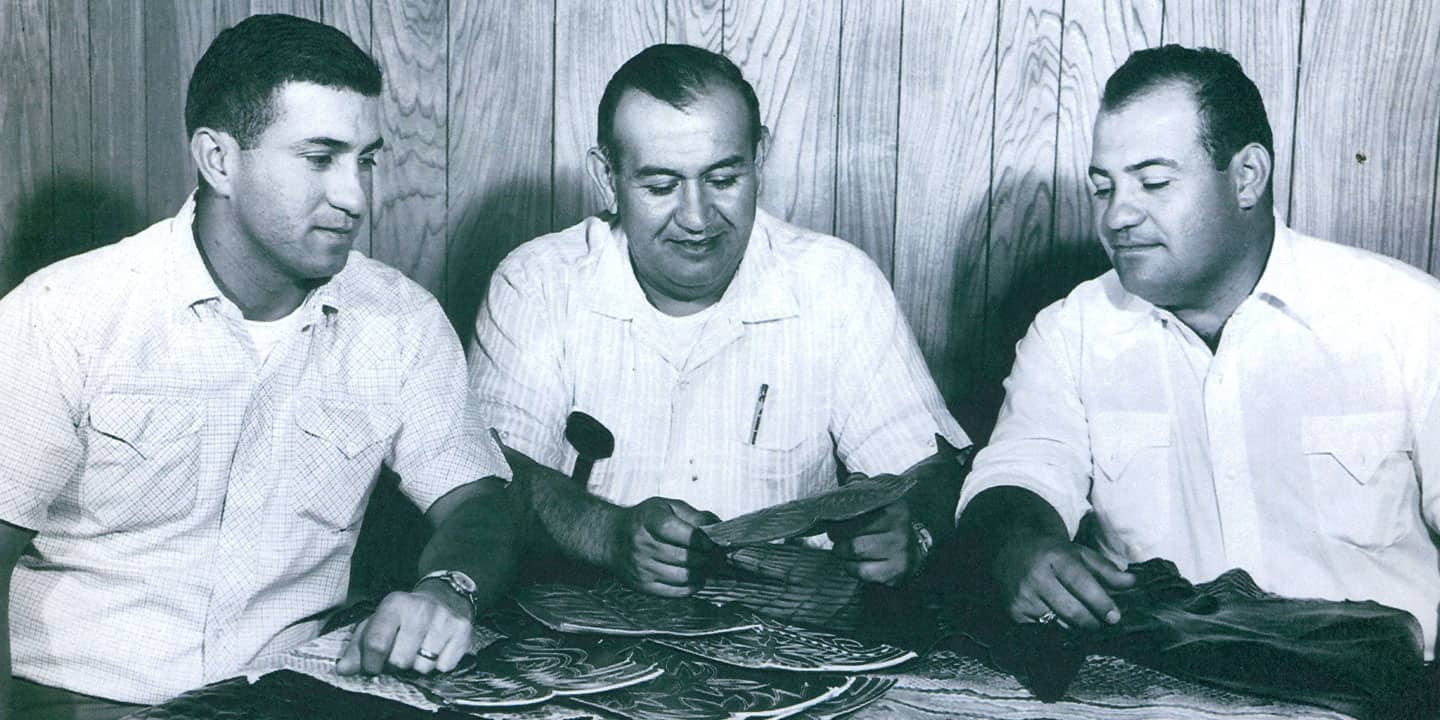
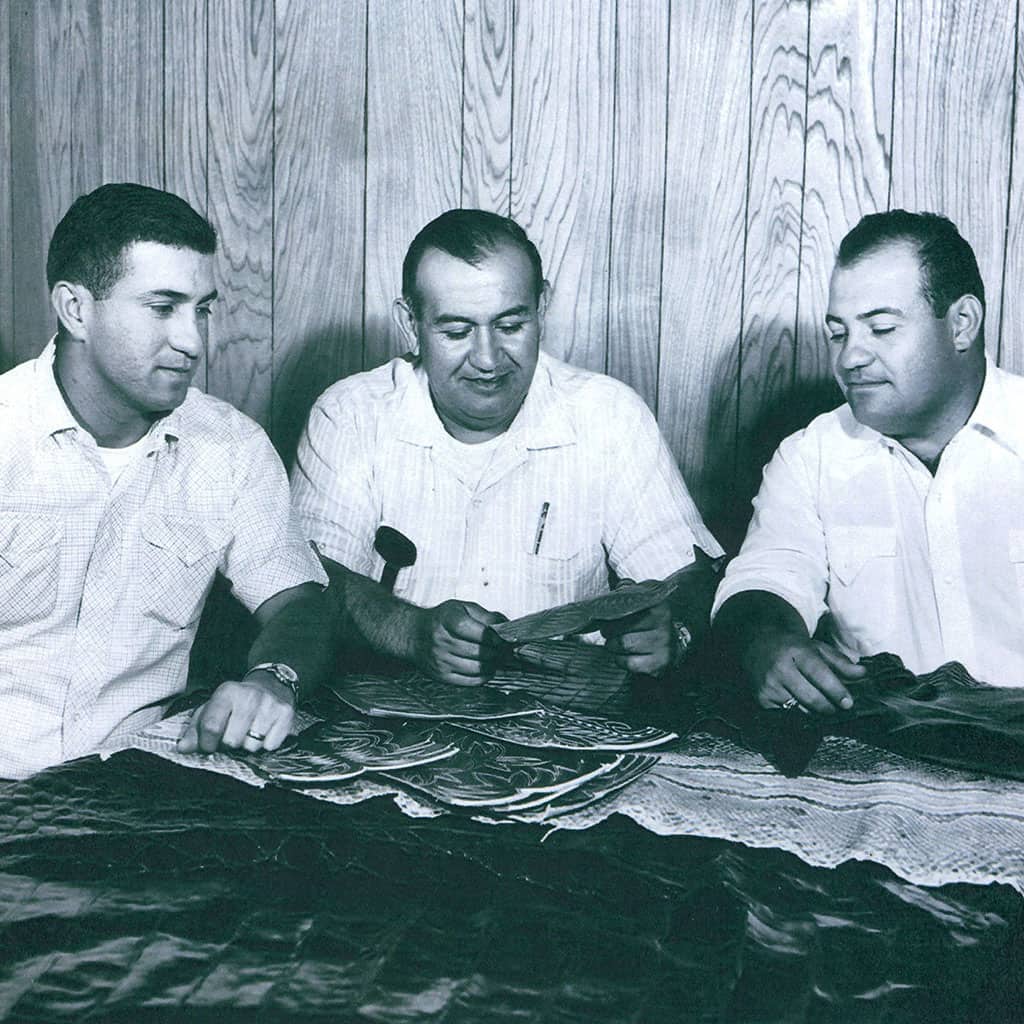
Tony Lama, Jr. Bert Lama and Louis Lama inspecting exotic leather for quality.
1950
A Change
In the 1950s, Tony Lama established himself as an innovator, introducing new leathers, techniques and construction never before used in boot making. This transformed the industry and brought a higher level of demand on the company. During this time, the factory was producing 3,100 pairs of boots per day and its products were sold in more than 4,500 different retailers around the globe.
1967
A New Location
Due to the growth of the company, in 1967 the plant was moved to 1137 Tony Lama Street in El Paso, TX. From 1967 to 1970, half of the plant was represented by a labor union. After a dispute between a union worker and a non-union worker, the Lama family, including the children and grandchildren, took on the production at the factory working overtime to make up for lost work.
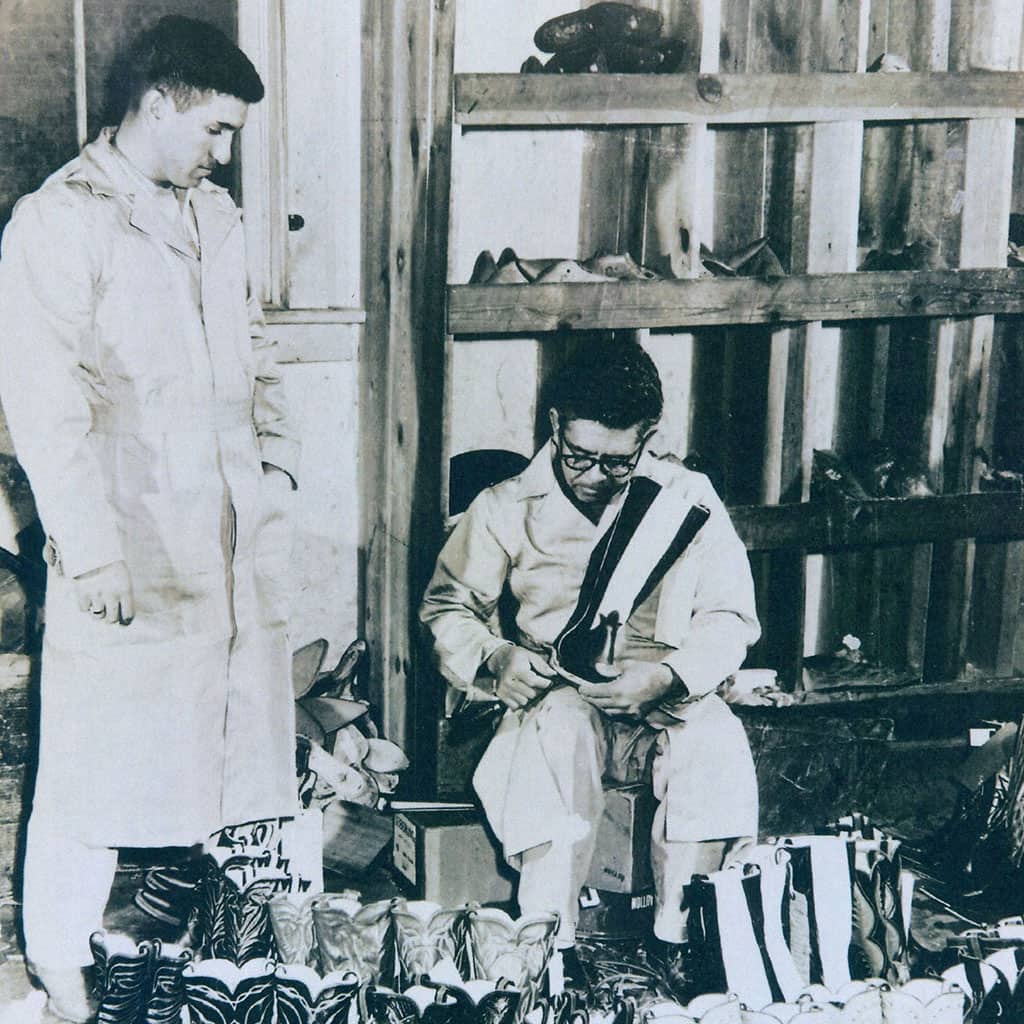
Joe Lama Jr., left, at the Tony Lama factory circa late 1940s-early 1950s.
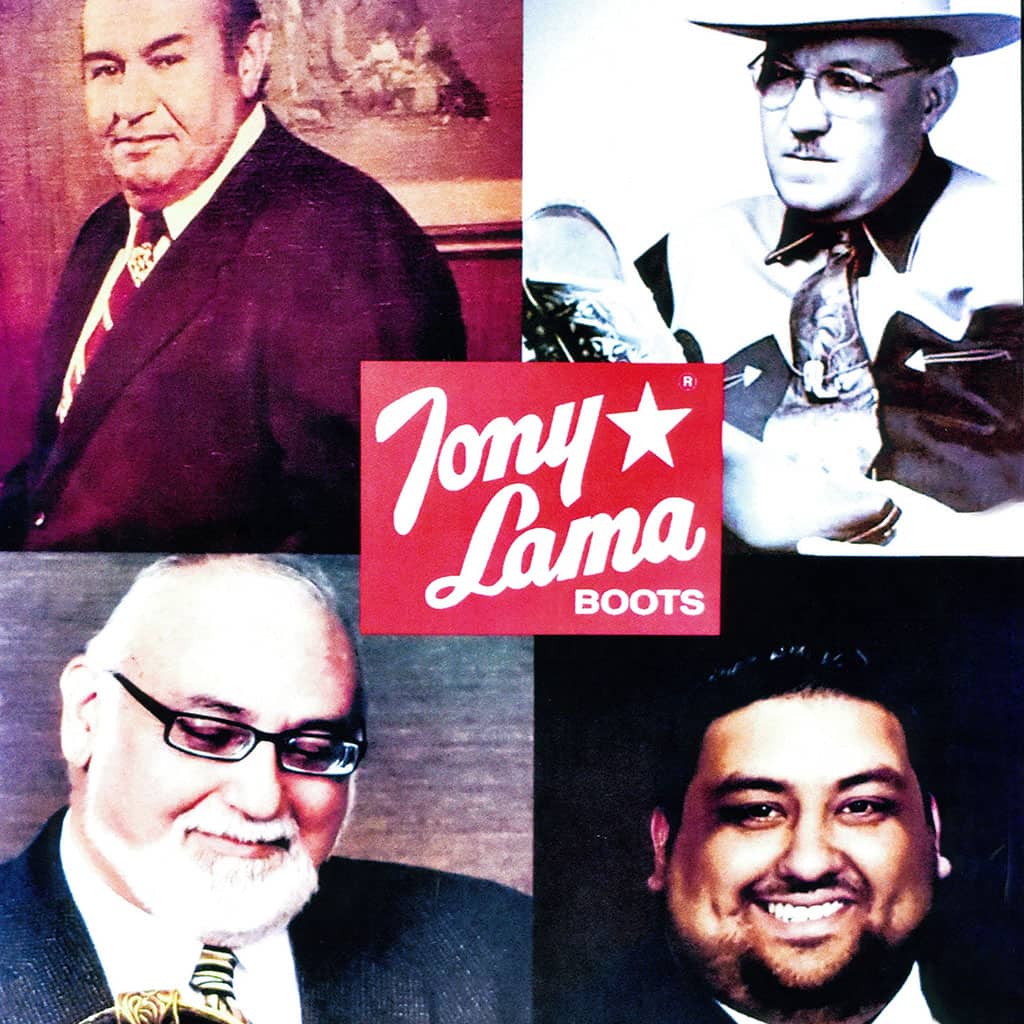
4 Generations of Lamas. Clockwise from top left: Joseph Humberto (Bert) Lama, Tony Lama, Sr., Joseph Lama III, Joe Lama, Jr.
1968
From the late sixties to the 1970s, Tony Lama Sr.’s son, Joseph H. Lama, Sr., known as Bert, was instrumental in helping the company adapt to such massive growth. He played a large role in setting up purchasing standards and best practices for the company, and was one of the first in the industry to successfully innovate ostrich leather in boot making.
1971
Tony Lama became a public company, and Bert was greatly responsible for bringing about this successful transition.
1974
The End of a New Beginning
In January of 1974, Tony Lama Sr. passed away, but the legacy created by the humble cobbler, a hardworking entrepreneur with a fierce pride in his craft, lived on. After the death of his father, Tony Lama Jr., the middle son, succeeded to presidency of the company.
1980
Urban Cowboy
The early 1980s were an exciting time for western industries. The release of the movie Urban Cowboy, a popular movie starring John Travolta and Debra Winger, created a newfound consumer demand for cowboy boots, in particular lizard wingtips, a well-known Tony Lama craft. During this time, the factory’s daily production increased to 5,200 pairs per day, which required the business to relocate to an 80,000 square foot plant. Unfortunately, this craze did not last after the recession hit and temporarily curtailed production.
1990 to today
The Legacy Continues On
In August of 1990, Tony Lama Company, Inc. was purchased by Justin Industries. Today various brands such as Tony Lama, Justin, Nocona Boots, and Chippewa, all fall under the Justin Brands umbrella owned by Berkshire Hathaway. Although many Lama generations have passed on, you can still find Tony Lama Sr.’s living on today through his grandson, Joe Lama, who still works as a leather purchaser at the company today.
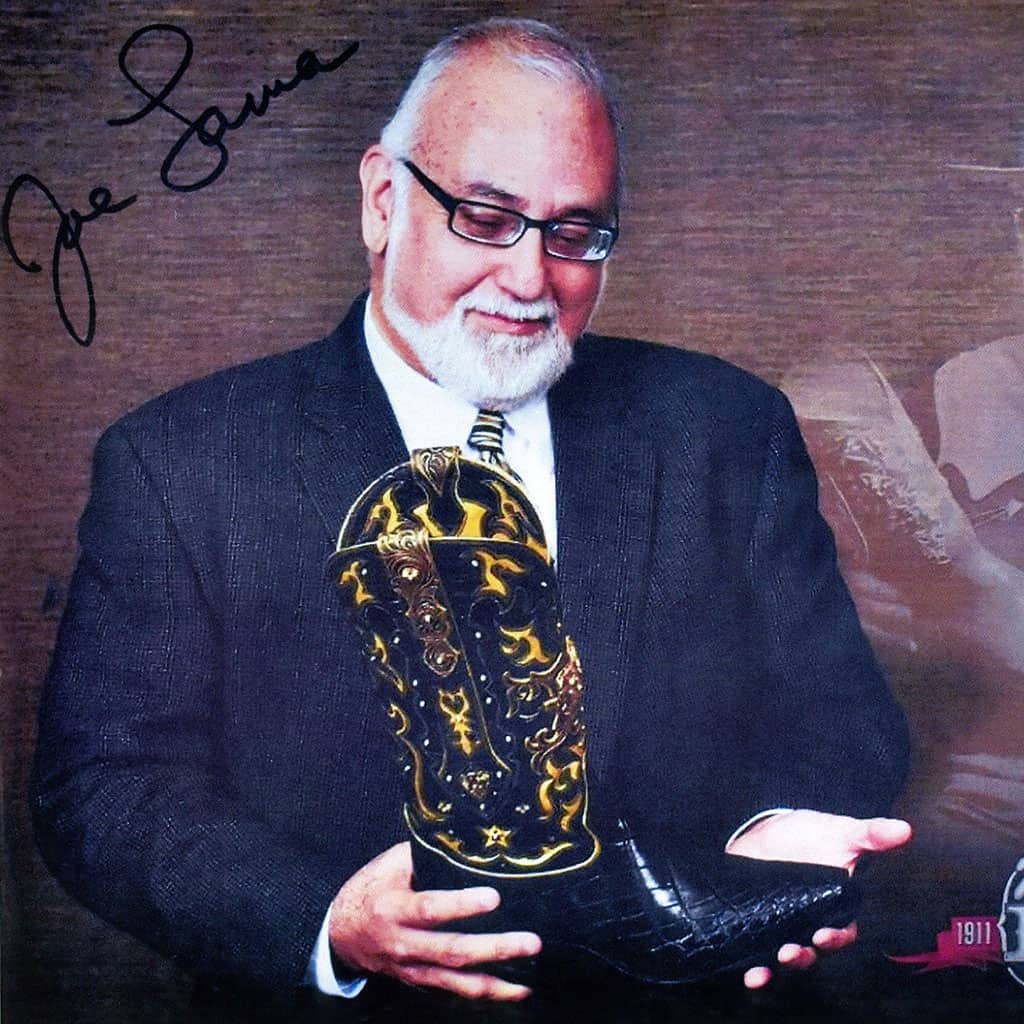
Tony Lama's grandson, Joe Lama, celebrating Tony Lama's 100th Anniversary in 2011.
